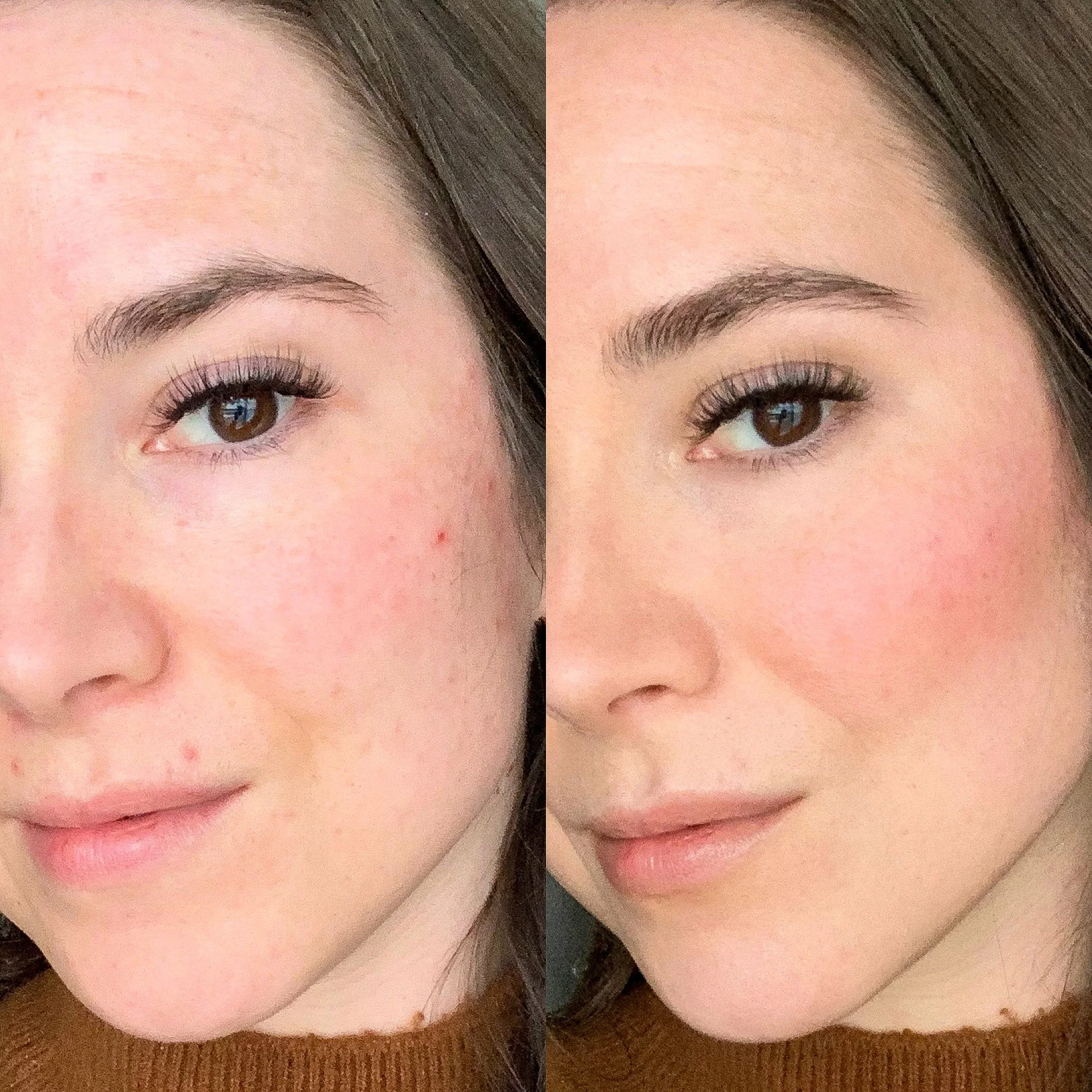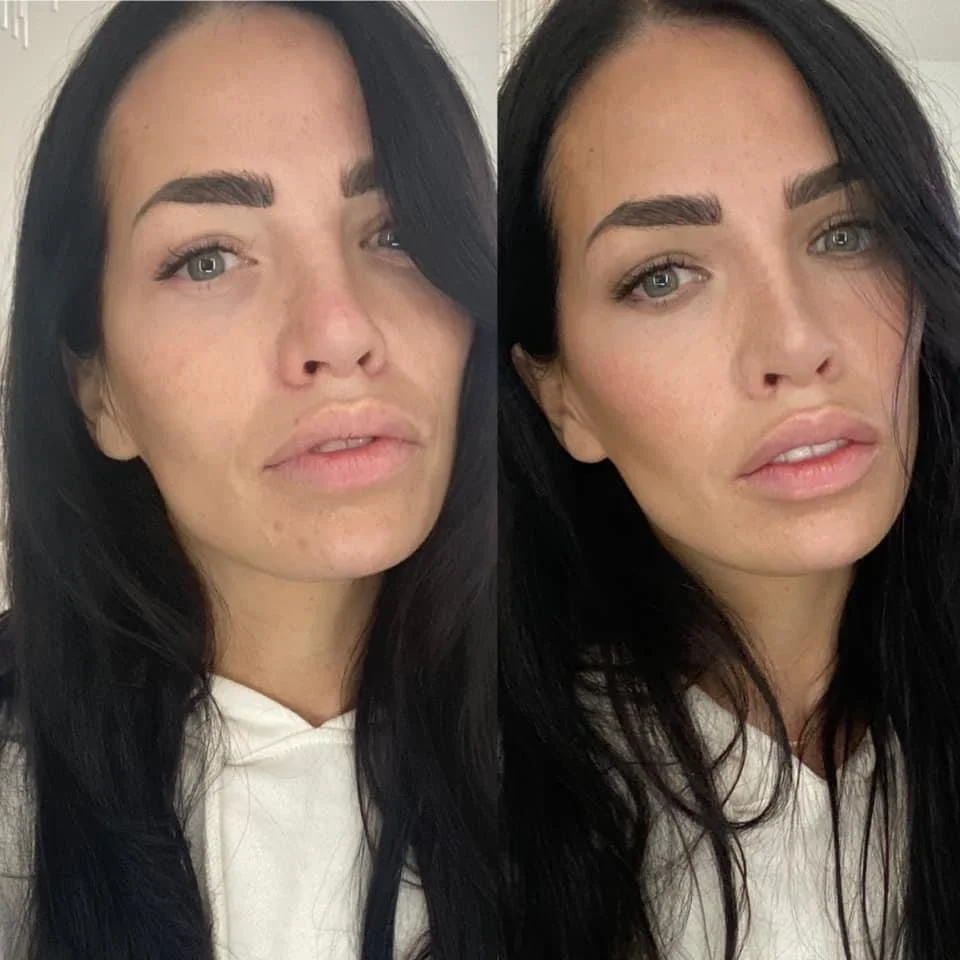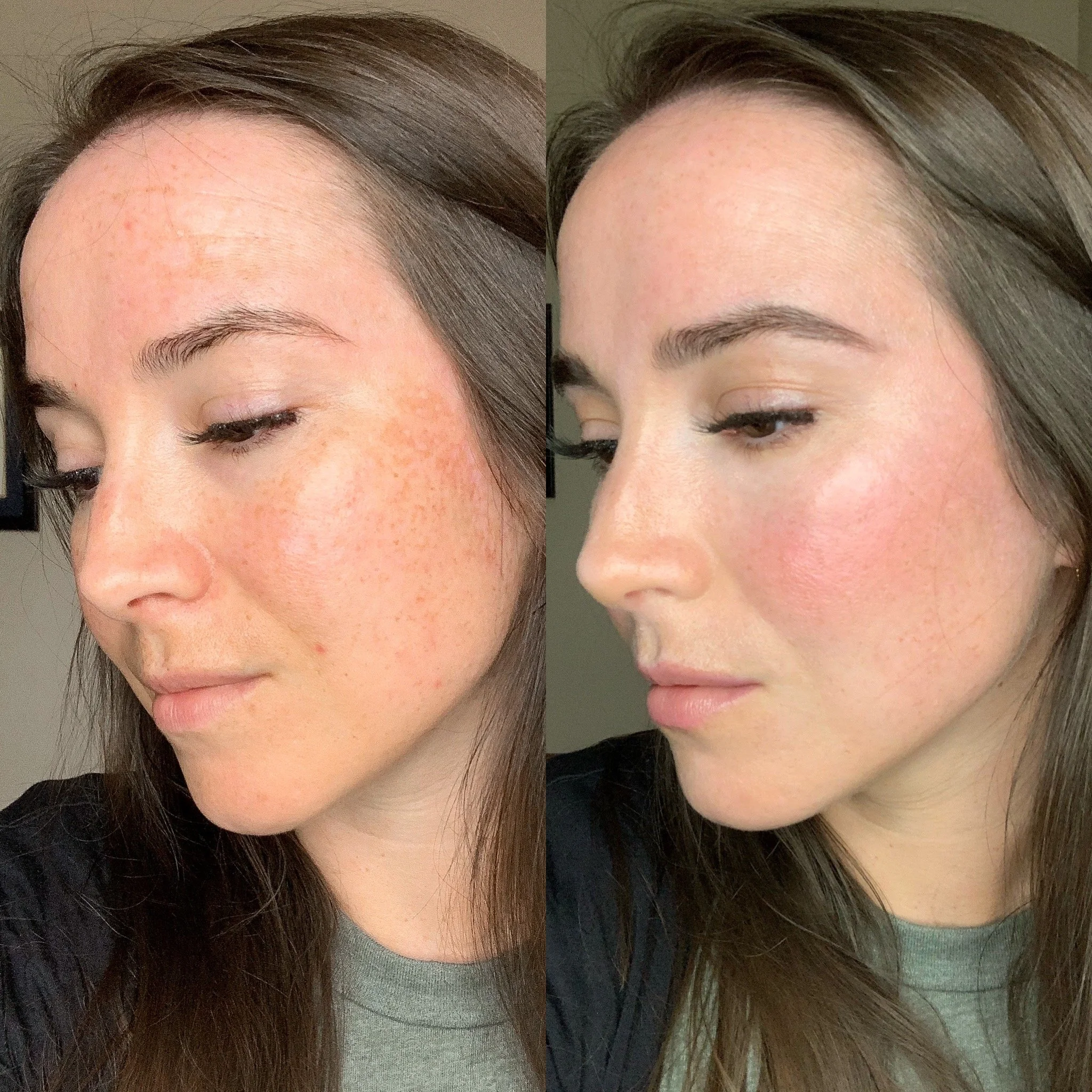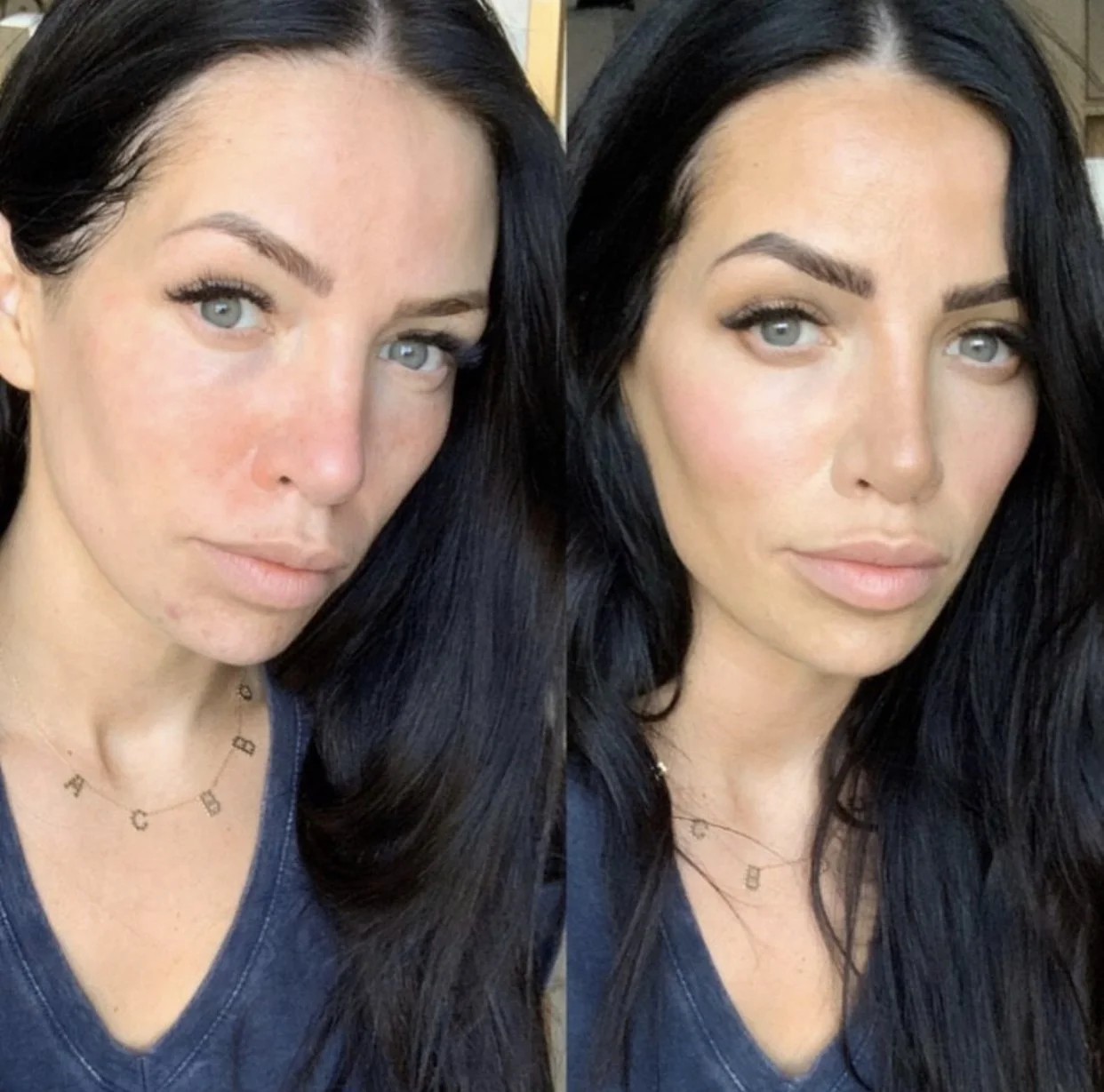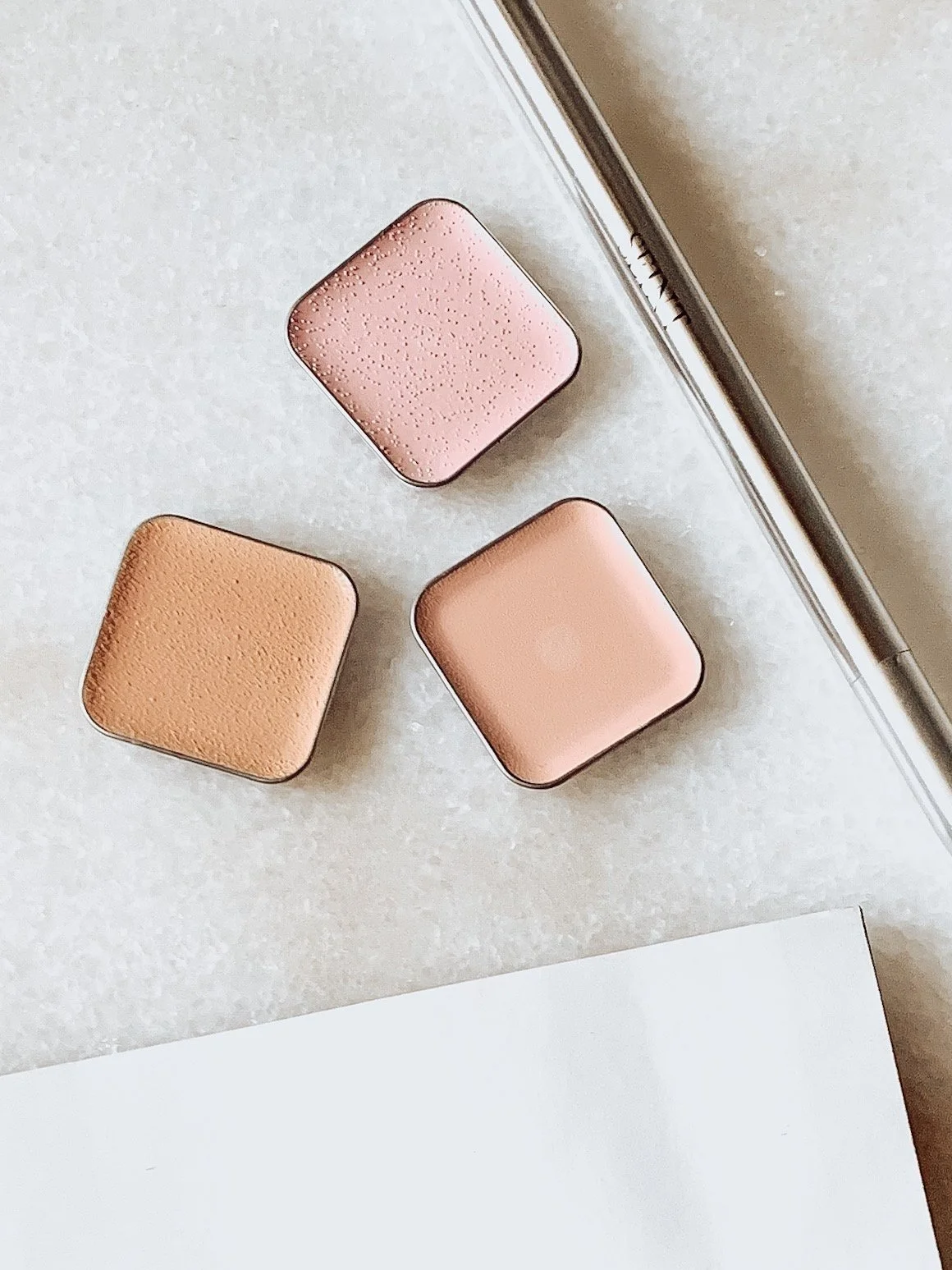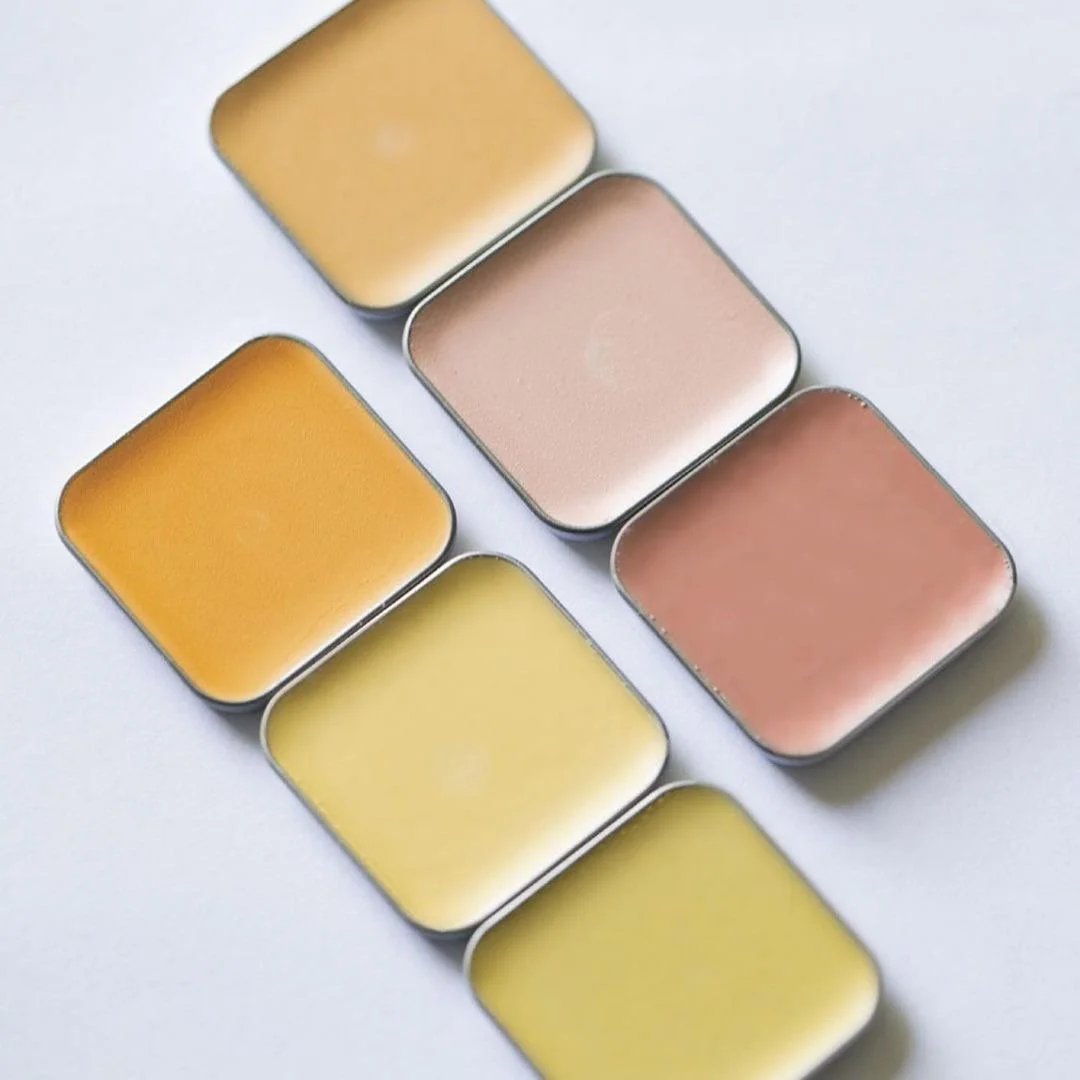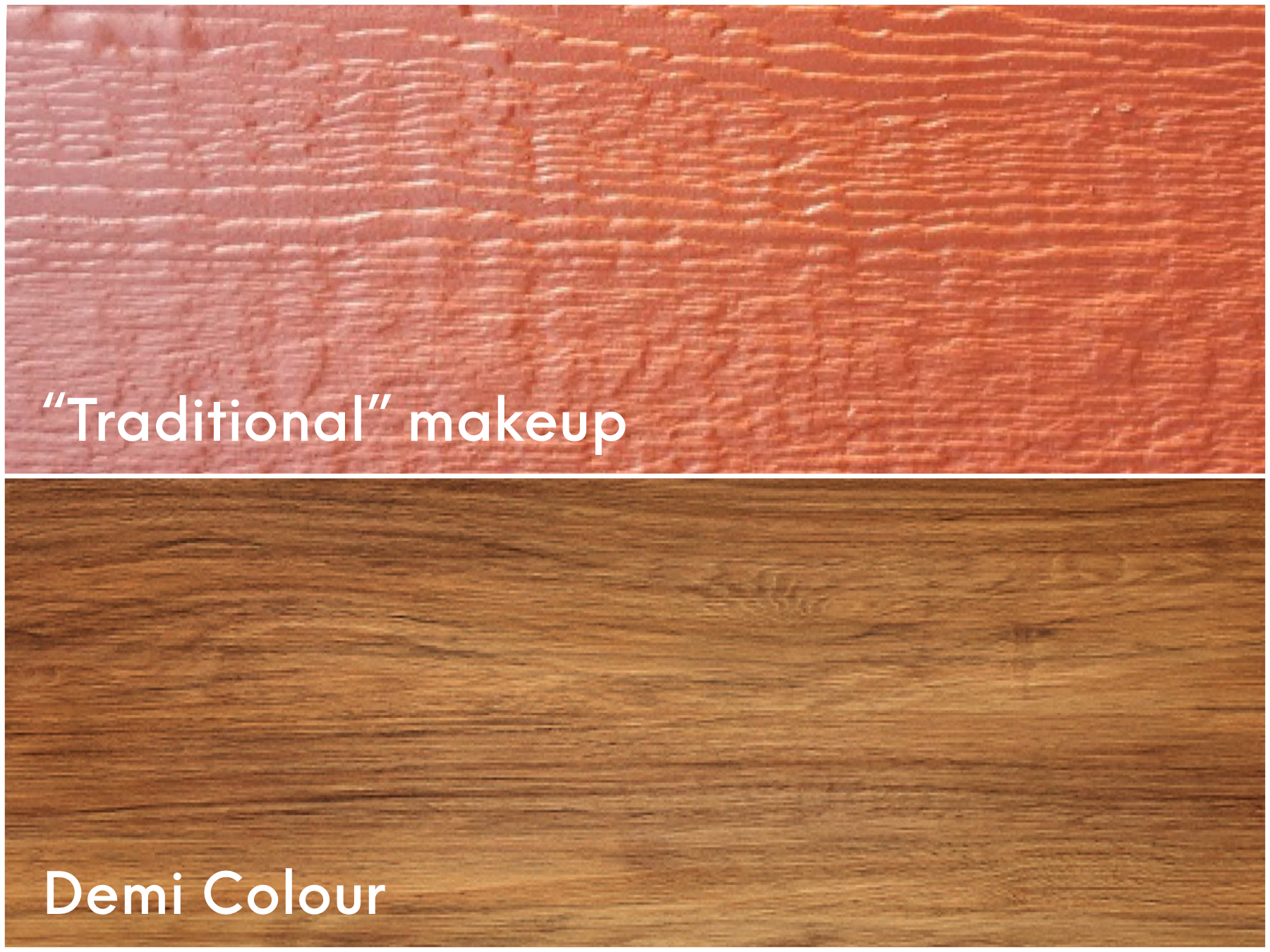Sculpting & Toning with Demi Colour
When doing a “full face” of Demi Colour, adding color should be your first step! Demi can be used to sculpt (contour) your features, add blush, and tone larger areas of discoloration. It’s important to add color first so you can establish the final outcome of the colors in your face. Sculpting and toning can also minimize certain skin concerns, so afterward you may find that you don’t need to filter as many distractions as you thought! It can feel a little backwards to add your contour and blush at the beginning of a makeup routine before concealing your “imperfections”, but just trust the process!
But first… The Demi Colour fundamentals:
WHAT IS DEMI??
Demi Colour is a color correcting makeup product that uses color science to neutralize the excess color in your complexion without leaving behind any visible makeup texture. It’s not “makeup” - it’s a filter! Demi Colour doesn’t try to “cover” your skin concerns, it changes what we see so these concerns are no longer visible in the first place.
(New to Demi Colour?? Read up on the fundamentals here.)
Demi Colour Order of Application
Sculpting
Demi can be used to create a sheer contoured effect to accentuate your features.
Neutral Demi Colour shades are noted by the “N” in their name. (Ex. NR, NG, NO, etc.)
Sculpt underneath your cheekbones, the edge of your forehead along the hairline, the sides of the nose, under your bottom lip, etc.
2. Blush
Demi blush adds a sheer wash of color to your cheeks to enhance your rosy glow!
Blush can be important even if you have natural redness in your skin, because it can be used to even out the cheek area.
Instead of “covering” your natural redness, try choosing a Demi blush shade (level 3-7) that mimics your natural blush and only apply where it’s needed to make your natural color work for you!
3. Toning
Toning can be used to change the color of a larger area of discoloration on the face.
Choose a complimentary color to the excess color in your skin and apply an invisible layer of color to “tone” the area.
This can be especially useful for overall sallowness, hyperpigmentation, or redness.
4. Filtering
This is the last step in your makeup routine!
Now that you’ve added all your color, your face is complete. All that’s left to do is filter away any remaining distractions.
Use complimentary colors to filter away your blemishes, hyperpigmentation, undereye darkness, etc.
Demi Colour as a Stain vs. “Traditional” Makeup as Paint
One way to think of Demi Colour to understand how it works is to compare it to “traditional” makeup.
You can imagine traditional makeup like paint on a wood floor. It relies on opacity to “cover” the wood. The wood is no longer visible through the paint.
Demi Colour is like a stain on a wood floor. It’s sheer and changes the color of the wood, but the wood grain and natural beauty is still visible.
So…
When applying Demi Colour, just remember that it’s a sheer product. It filters what you can see and doesn’t add excess makeup texture. Always take the underlying skin tone and excess color into consideration when applying Demi on top. Don’t try to “cover” anything, remember that you’re applying a filter to the skin.
Can I use my IIID Foundation or other makeup to sculpt and apply blush like this before filtering with Demi?
Yes, you can! While I prefer using Demi neutral sculps and blushes because they’re an invisible sheer product, they are also now Limited Edition and may not be around for much longer. If they’re no longer available you can use other kinds of cream contour and blush as a substitute for a similar effect.
Ready to give it a try?
Learning how to use Demi Colour can feel overwhelming at first. You may feel like it’s easier to apply a layer of skin-toned makeup over the entire face, and there’s nothing wrong with that! But if you want your makeup to be as natural-looking and invisible as possible - nothing accomplishes this better than Demi Colour. Because instead of simply attempting to cover skin concerns, Demi addresses the excess color directly. Using much less product, invisibly, and without creasing or caking. Leaving the natural radiance of your skin intact without layers of heavy makeup. Principles like Sculpting & Toning can be challenging to get the hang of in the beginning and may take some trial and error to figure out what works best for you - but all of your perseverance is well worth it!
Need help with choosing colors?
If you need help choosing Demi Colours for your skin tone and skin concerns, click here for a complimentary color consultation by me! I will email you some personalized recommendations.
